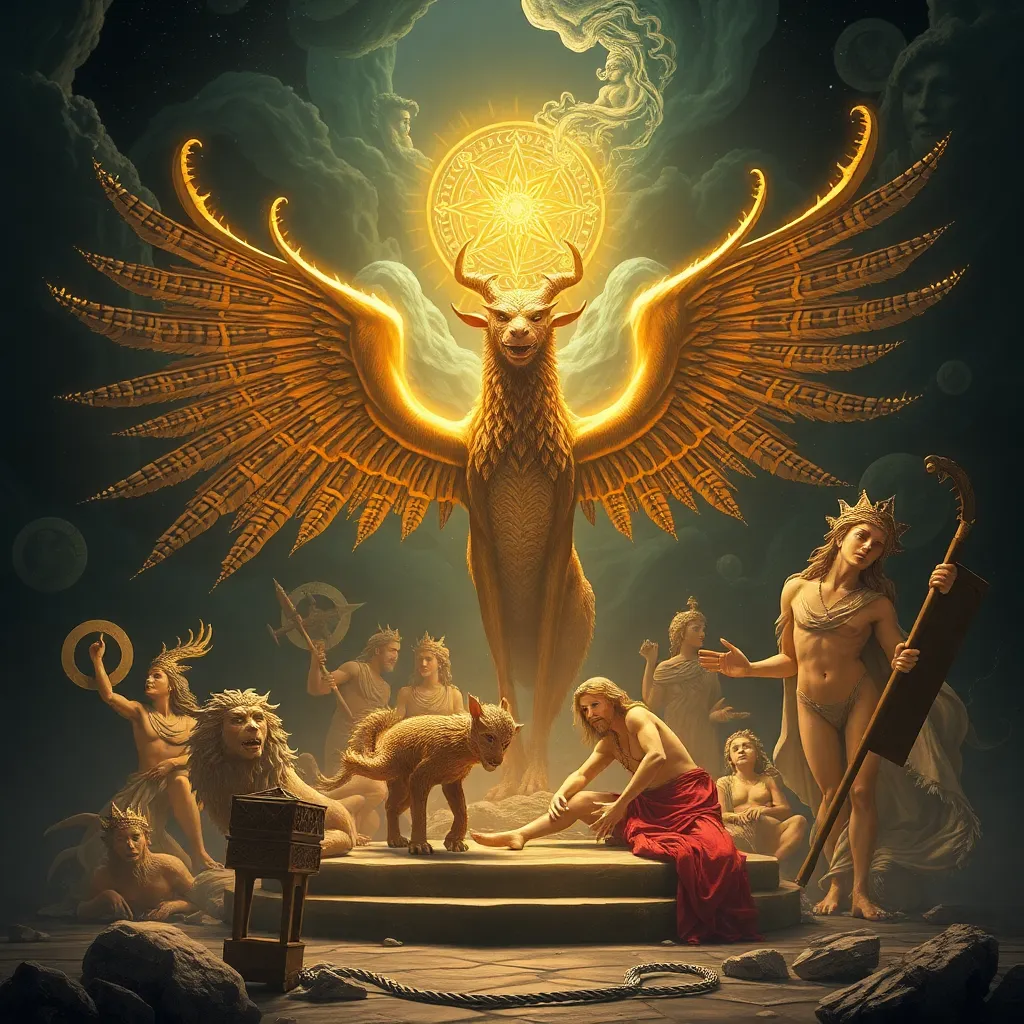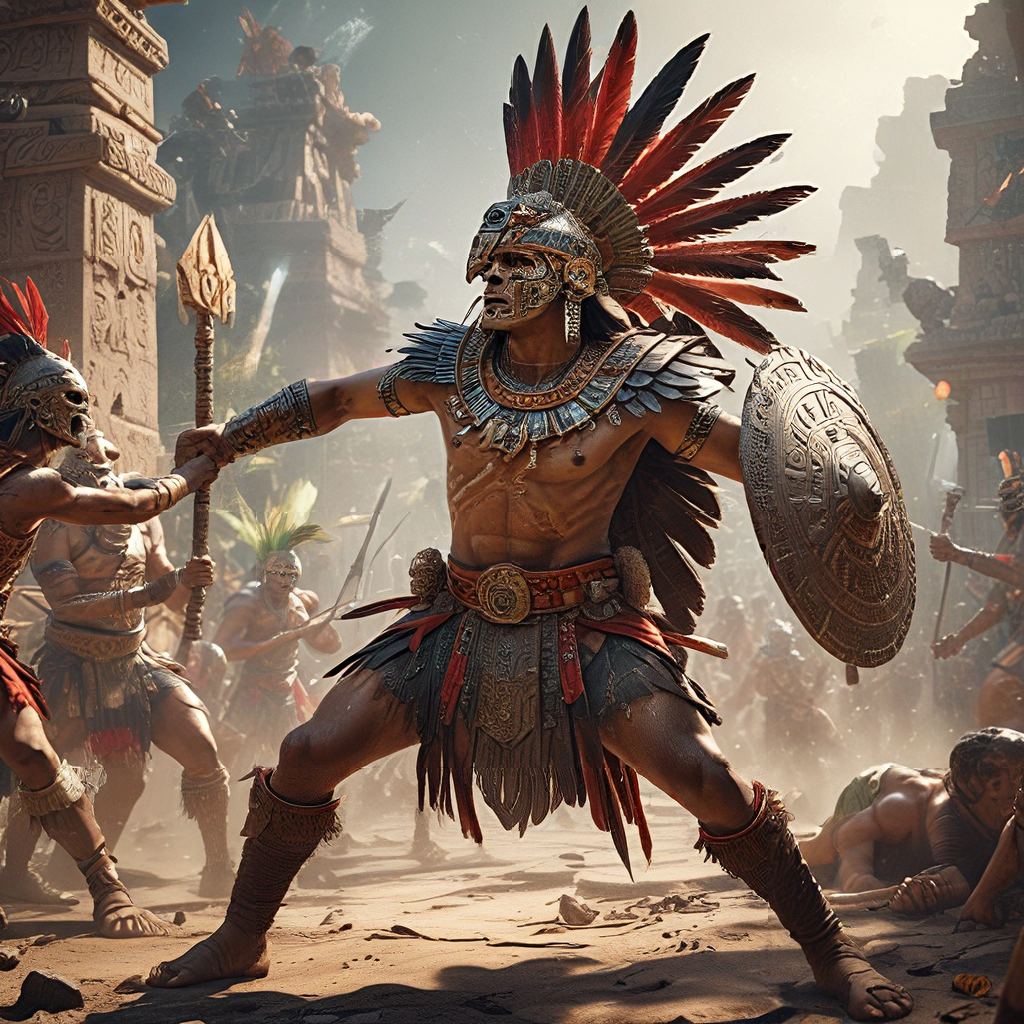The Peryton and the Roman Pantheon: A Mythological Cross-Pollination
I. Introduction
The Peryton is a fascinating mythical creature that has sparked intrigue and curiosity among mythologists and fantasy enthusiasts alike. Originating from ancient texts, particularly in the works of Jorge Luis Borges, the Peryton is often depicted as a winged creature resembling a stag, complete with a beak and feathers. Its unique appearance and the symbolism it carries make it a compelling subject for exploration.
On the other hand, the Roman Pantheon stands as a monumental testament to the religious and cultural beliefs of ancient Rome. It consists of a multitude of gods and goddesses, each representing various aspects of life, nature, and human experience. The significance of these deities in shaping Roman culture cannot be overstated.
This article aims to explore the intersection of the Peryton and the Roman Pantheon, examining how these mythological elements interact and influence one another within the broader tapestry of mythology.
II. The Peryton: A Mythical Creature
A. Description of the Peryton’s characteristics and symbolism
The Peryton is often depicted as a hybrid creature, combining features of both birds and mammals. Its most distinguishing traits include:
- A stag-like body with antlers
- Feathers that adorn its wings
- A beak that adds an avian quality to its appearance
Symbolically, the Peryton represents the duality of nature, embodying both the earthbound qualities of a deer and the lofty aspirations of a bird. This duality speaks to themes of transformation, freedom, and the interconnectedness of life.
B. Historical references and sources of the Peryton in mythology
The most notable reference to the Peryton comes from Jorge Luis Borges’ “Book of Imaginary Beings,” where it is described in detail. However, its roots can also be traced back to various mythological traditions that feature hybrid creatures. The Peryton’s unique combination of traits resonates with other mythological entities, suggesting a deeper cultural significance.
C. The role of the Peryton in cultural narratives
The Peryton serves as a narrative device in various stories, often symbolizing the conflict between nature and civilization. It represents the wild, untamed aspects of life that challenge human order, making it a potent symbol in literature and art.
III. The Roman Pantheon: Gods and Goddesses
A. Overview of key deities in the Roman Pantheon
The Roman Pantheon is filled with a diverse array of deities, each with distinct roles and attributes. Some of the most notable include:
- Jupiter: King of the gods, associated with thunder and the sky.
- Juno: Queen of the gods, protector of marriage and women.
- Neptune: God of the sea, often depicted with a trident.
- Venus: Goddess of love and beauty, representing desire and fertility.
B. The significance of mythology in Roman culture
Mythology played a crucial role in Roman culture, serving not only as a source of entertainment but also as a means of explaining natural phenomena and human experiences. Myths were interwoven into the daily lives of Romans, influencing their art, literature, and religious practices.
C. The interrelationship between Roman deities and nature
The Roman gods and goddesses were deeply connected to nature, with many deities personifying natural elements. For example:
- Ceres, goddess of agriculture, represented the fertility of the earth.
- Flora, goddess of flowers, symbolized the beauty of the natural world.
This connection highlights the Romans’ reverence for nature and its cycles, reflecting a worldview similar to that embodied by the Peryton.
IV. Points of Intersection: The Peryton and Roman Deities
A. Similarities between the Peryton and Roman mythological creatures
The Peryton shares characteristics with various Roman mythological creatures, such as:
- The Harpies, winged spirits known for their dual nature.
- The Griffin, a creature with the body of a lion and the head and wings of an eagle, representing strength and wisdom.
These creatures, like the Peryton, illustrate the blending of animal traits to convey deeper symbolic meanings.
B. Thematic connections: nature, transformation, and duality
Both the Peryton and Roman mythology explore themes of transformation and duality. The Peryton embodies the duality of land and sky, while Roman myths often depict gods and goddesses undergoing transformations, such as Daphne becoming a laurel tree to escape Apollo.
C. Instances of cross-references in literature and art
Throughout history, literature and art have featured both the Peryton and Roman deities, often drawing parallels between their stories. Artists have depicted scenes where the traits of these mythical beings converge, creating a rich tapestry of cross-references that highlight their shared themes.
V. Cultural Exchange: Origins and Influences
A. Historical context of cross-cultural interactions in ancient civilizations
The ancient world was characterized by extensive trade and cultural exchange, which allowed for the blending of mythological narratives. As civilizations interacted, they shared stories, beliefs, and artistic expressions, leading to the evolution of myth.
B. The impact of trade and conquest on mythological narratives
Roman conquests spread their culture and mythology throughout Europe and the Mediterranean, allowing for the infusion of local beliefs with Roman traditions. This blending enriched the mythological landscape, enabling creatures like the Peryton to find a place within various narratives.
C. The blending of mythological themes across cultures
As myths merged, common themes emerged, such as the representation of nature, the significance of transformation, and the moral lessons derived from mythological tales. This cross-pollination created a diverse mythological spectrum that continues to inspire storytellers today.
VI. Modern Interpretations and Representations
A. The resurgence of interest in mythological creatures in contemporary culture
In recent years, there has been a resurgence of interest in mythological creatures, including the Peryton. This renewed fascination reflects a longing for connection to ancient stories and the timeless themes they convey.
B. The Peryton in modern literature, film, and games
The Peryton has made appearances in various modern fantasy literature, films, and video games, often portrayed as enigmatic creatures that embody both beauty and danger. This portrayal continues to evolve, capturing the imaginations of new generations.
C. The Roman Pantheon’s continuous influence on modern storytelling
The Roman Pantheon remains a rich source of inspiration for contemporary storytelling. From novels to blockbuster films, the themes and characters of Roman mythology are woven into narratives, reflecting their enduring relevance in modern culture.
VII. The Significance of Mythological Cross-Pollination
A. Understanding cultural identity through mythology
Mythology provides insight into cultural identity, offering a window into the values, beliefs, and traditions of a society. The interplay between different mythological traditions, such as the Peryton and Roman deities, showcases how cultures define themselves through shared stories.
B. The importance of myth in shaping societal values and beliefs
Myths serve as moral compasses, guiding societal values and beliefs. The lessons embedded in these stories influence how communities perceive themselves and their relationship with the world.
C. Lessons learned from the fusion of different mythological traditions
The fusion of mythological traditions teaches us the importance of openness and adaptability in understanding diverse cultures. By embracing the richness of various narratives, we can foster greater appreciation for the complexities of human experience.
VIII. Conclusion
In summary, the exploration of the Peryton and the Roman Pantheon reveals a rich tapestry of mythological cross-pollination. The similarities and thematic connections between these entities highlight the enduring significance of mythology in shaping cultural narratives.
The ongoing relevance of the Peryton and Roman Pantheon in modern culture exemplifies the timeless nature of these stories, reminding us of the power of myth to inspire, educate, and connect



